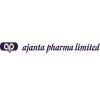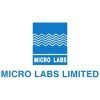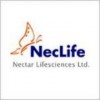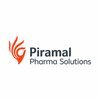Filter interviews by
NecLife Manager Environment Interview Questions, Process, and Tips
NecLife Manager Environment Interview Experiences
1 interview found
I applied via Company Website and was interviewed before Aug 2022. There were 3 interview rounds.

(4 Questions)
- Q1. ZLD & Environment compliances
- Q2. What is ZLD & CTO
- Ans.
ZLD stands for Zero Liquid Discharge and CTO stands for Consent to Operate.
ZLD is a water treatment process where all wastewater is purified and recycled, leaving zero discharge at the end.
CTO is a document issued by pollution control boards to industries allowing them to operate after meeting certain environmental standards.
Both ZLD and CTO are important in ensuring environmental sustainability and compliance with reg
- Q3. What are basis treatment techniques for waste water COD
- Ans.
Basis treatment techniques for wastewater COD include biological treatment, chemical treatment, and physical treatment.
Biological treatment involves using microorganisms to break down organic matter in the wastewater.
Chemical treatment involves adding chemicals to the wastewater to facilitate the removal of COD.
Physical treatment methods include processes like filtration, sedimentation, and adsorption to reduce COD lev...
- Q4. HCOD TREATMENT TECHNIQUES
(6 Questions)
- Q1. What are environment compliances to maintain in industries
- Ans.
Environment compliances in industries include following regulations and guidelines to minimize impact on environment.
Obtaining necessary permits and licenses for operations
Implementing pollution control measures
Proper waste management and disposal practices
Regular monitoring and reporting of emissions and effluents
Compliance with environmental laws and regulations
Implementing sustainable practices to reduce environment
- Q2. What are basis parameters of ZLD as per PPCB.
- Ans.
ZLD parameters as per PPCB include TDS, pH, BOD, COD, and heavy metals.
Total Dissolved Solids (TDS) should be reduced to minimum levels.
pH should be within the permissible range set by PPCB.
Biological Oxygen Demand (BOD) and Chemical Oxygen Demand (COD) levels should be minimized.
Heavy metals such as lead, mercury, and chromium should be effectively removed.
Effluent should meet the standards set by Punjab Pollution Con
- Q3. What’s reverses osmosis.
- Ans.
Reverse osmosis is a water purification process that uses a partially permeable membrane to remove ions, molecules, and larger particles from drinking water.
Reverse osmosis is a water treatment process that uses pressure to force water through a membrane, removing impurities.
It is commonly used in desalination plants to turn seawater into drinking water.
Reverse osmosis systems are also used in households to purify drin...
- Q4. What are trouble shooting in Bio etp
- Ans.
Troubleshooting in Bio ETP involves identifying and resolving issues in the biological effluent treatment process.
Monitor key parameters such as pH, temperature, dissolved oxygen levels, and organic load regularly.
Check for any signs of foaming, odors, or unusual color in the treated water, which may indicate problems with the microbial population.
Inspect mechanical components such as pumps, aerators, and mixers for pr...
- Q5. How do know CTO & CTE of air & water
- Q6. What are parmates in outlet in ETP
- Ans.
Parmates in outlet in ETP are microorganisms that help in breaking down organic matter in the effluent treatment plant.
Parmates are essential for the biological treatment process in ETPs.
They help in breaking down organic pollutants into simpler, less harmful substances.
Examples of parmates include bacteria, fungi, and algae.
Proper maintenance of parmates is crucial for the efficient functioning of ETPs.
Interview Preparation Tips
Top trending discussions






Interview questions from similar companies

Interview Questionnaire
1 Question
- Q1. About subject of my department related

I appeared for an interview in May 2017.
Interview Preparation Tips
Experience: Query in detail as mentioned in my resume
Tips: please mention thing as you know very well
Round: HR Interview
Experience: asking for previous company any why I am intended to shift to new one
Tips: give proper reason or simply growth
Skills: Accounting

Assistant Manager Interview Questions & Answers
Micro Labsposted on 19 Dec 2019
I applied via Referral and was interviewed before Dec 2018. There were 3 interview rounds.
Interview Questionnaire
3 Questions
- Q1. How many types of ICH guidance s
- Q2. What is the Ich limit for methanol and class of solvent
- Ans.
The Ich limit for methanol is 0.6% and it is classified as a class 3 solvent.
The Ich limit for methanol refers to the maximum allowable amount of methanol in a pharmaceutical product.
The Ich limit for methanol is set at 0.6%, meaning that the concentration of methanol should not exceed 0.6% in the product.
Methanol is classified as a class 3 solvent according to the International Council for Harmonisation of Technical R...
- Q3. What is the specification limit for known impurities and unknown impurities and which guideline explains
- Ans.
The specification limit for known and unknown impurities varies depending on the specific substance being tested.
The specification limit for known impurities is typically set by regulatory agencies or pharmacopoeias.
For example, the United States Pharmacopeia (USP) sets limits for known impurities in pharmaceutical substances.
The specification limit for unknown impurities is usually determined through method validation...
Interview Preparation Tips

I applied via Approached by Company and was interviewed before Jun 2021. There were 2 interview rounds.

(1 Question)
- Q1. Technical and Managerial skill
Interview Preparation Tips
Process skills

I appeared for an interview in Nov 2020.
Interview Questionnaire
1 Question
- Q1. 1. Complete P2P Cycle
- Ans.
P2P cycle refers to the process of procuring goods or services from a supplier and making payments for them.
The cycle starts with identifying the need for goods or services.
The next step is to create a purchase order (PO) and send it to the supplier.
The supplier then delivers the goods or services and sends an invoice to the buyer.
The buyer verifies the invoice and matches it with the PO and goods received.
If everythin...
Interview Preparation Tips
Skills evaluated in this interview

Assistant Manager Interview Questions & Answers
Unichem Laboratoriesposted on 25 Feb 2024
I applied via Referral and was interviewed before Feb 2023. There were 2 interview rounds.
(4 Questions)
- Q1. Process Validation related.
- Ans. Description of process validation and impact
- Q2. CPP parameters description and impact on which CQA
- Ans.
CPP parameters refer to Critical Process Parameters which have a significant impact on Critical Quality Attributes (CQA) in manufacturing processes.
CPP parameters are specific process variables that must be controlled within a certain range to ensure product quality.
Examples of CPP parameters include temperature, pressure, flow rate, and mixing speed.
The impact of CPP parameters on CQA can be seen in the final product ...
- Q3. Stability studies for pharmaceutical products.
- Q4. Annual report submission procedure for usfda approved products.
- Ans.
The annual report submission procedure for USFDA approved products involves compiling data on product performance, safety, and compliance with regulations.
Compile data on product performance, safety, and compliance with USFDA regulations
Submit the annual report to the USFDA within the specified deadline
Include information on any changes in manufacturing processes or product labeling
Ensure all data submitted is accurate
(1 Question)
- Q1. Reason for leaving the job
- Ans. For better opportunity and diversity in my career.
Interview Preparation Tips
Skills evaluated in this interview

I applied via Approached by Company and was interviewed in Jul 2023. There were 2 interview rounds.
(1 Question)
- Q1. Deep questions on process and quality elements
(1 Question)
- Q1. All Job related questions

I applied via LinkedIn and was interviewed in Aug 2023. There was 1 interview round.
(2 Questions)
- Q1. Lyophilization technique
- Ans.
Lyophilization is a technique used to remove water from a product by freeze-drying it.
Lyophilization involves freezing the product and then subjecting it to a vacuum to remove the frozen water through sublimation.
This technique is commonly used in the pharmaceutical industry to preserve drugs and vaccines.
Lyophilization helps to extend the shelf life of products and maintain their stability.
It is also used in the food ...
- Q2. Trouble shooting during cycle development
- Ans.
Trouble shooting during cycle development
Identify the problem or issue
Analyze the root cause
Develop a plan to resolve the problem
Implement the plan
Monitor and evaluate the results
Make necessary adjustments if needed

(1 Question)
- Q1. Which type of level sensor used in ferment
- Ans.
The type of level sensor commonly used in fermenters is a capacitance level sensor.
Capacitance level sensor is commonly used in fermenters to measure the level of liquid or solid materials.
This type of sensor works by detecting changes in capacitance as the level of the material changes.
Capacitance level sensors are accurate, reliable, and suitable for various types of fermenters.
Other types of level sensors used in fe...
NecLife Interview FAQs
Tell us how to improve this page.
NecLife Interviews By Designations
- NecLife Senior Officer Interview Questions
- NecLife Assistant Manager Interview Questions
- NecLife Research Associate Interview Questions
- NecLife Production Chemist Interview Questions
- NecLife Senior Engineering Manager Interview Questions
- NecLife Production Officer Interview Questions
- NecLife Quality Analyst Interview Questions
- NecLife Engineer Interview Questions
- Show more
Interview Questions for Popular Designations
- Environment Health and Safety Officer Interview Questions
- Environmental Engineer Interview Questions
- Environmental Officer Interview Questions
- Environmental Health and Safety Lead Interview Questions
- Environmental Health and Safety Manager Interview Questions
- Assistant Environment Health and Safety Manager Interview Questions
- Environment Executive Interview Questions
- Assistant Manager Environment Interview Questions
- Show more
NecLife Manager Environment Interview Process
based on 1 interview
Interview experience
Interview Questions from Similar Companies
Fast track your campus placements
|
Senior Chemist
108
salaries
| ₹1.5 L/yr - ₹4.4 L/yr |
|
Officer
90
salaries
| ₹2 L/yr - ₹4.6 L/yr |
|
Senior Officer
89
salaries
| ₹3 L/yr - ₹5.5 L/yr |
|
Executive
82
salaries
| ₹3 L/yr - ₹7.1 L/yr |
|
Senior Executive
58
salaries
| ₹4 L/yr - ₹8.6 L/yr |

Hetero

Abbott

Micro Labs

Ajanta Pharma
- Home >
- Interviews >
- NecLife Interview Questions >
- NecLife Manager Environment Interview Questions












